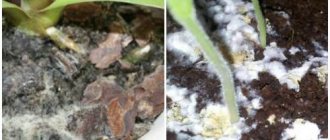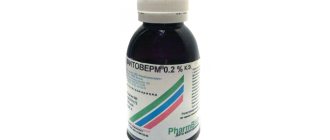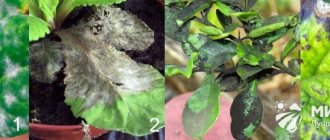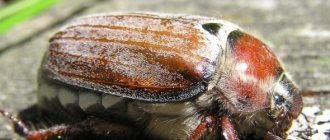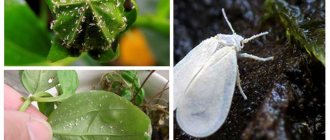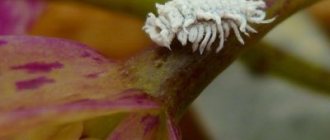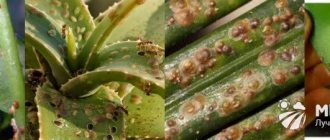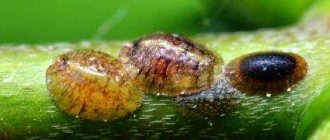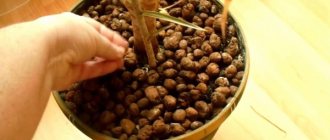Causes and symptoms
White coating on houseplants can be caused by a fungal disease or a pest that can create a white coating on the plant. If you care for your plants properly, pests or diseases will be kept to a minimum. But a situation may arise where diseases and pests can harm your plant.
- - a decrease in temperature below optimal conditions, usually below 10 degrees.
- — excess moisture in the pots or high humidity can cause diseases.
- - excess nutrients. Increasing the permissible norm of nutrients (fertilizers) can contribute to the development of diseases.
- - the reason for the deterioration in appearance may be the fact that the plant becomes cramped in its own pot. In other words, he has outgrown it.
- — violation of the watering regime (severe drying or excessive watering).
- - fungal diseases can be airborne (spores) or may be contained in irrigation water.
Any violation of the conditions for growing indoor plants reduces immunity and opens up the possibility of damage by pests or diseases.
Preventive measures
The complex of preventive work consists of several parts:
- Attention to the soil.
- The top layer of potting soil should be changed every 3-6 months (to a depth of 2-4 cm).
- Plants must be replanted as they grow into a new, more spacious pot. The root system is examined at the same time. If there are signs of disease, the old soil should be removed (washed off), and the roots should be disinfected in a weak solution of potassium permanganate.
- Before replanting, the new soil should be disinfected (calcined, steamed, frozen), and the pots disinfected (rinsed with a solution of potassium permanganate, doused with boiling water).
- To improve aeration, it is important to mix potting soil with perlite and vermiculite.
- Sufficient amount of moisture.
- It is worth watering potted plants when the soil dries to a depth of 2.5-3 cm. Excessive watering leads to waterlogging, soil oxidation, and the development of fungal diseases and mold. From soil that is too dry, the plant cannot receive nutrients and dies.
- Sometimes watering can be replaced by loosening, which is popularly called “dry watering.”
- Periodically, it makes sense to spray the plants leaf by leaf, possibly with the use of foliar fertilizing (fertilizers, growth and immunity stimulants).
- Preventive use of biological or chemical control agents: spilling with a solution of Fitoverm, Aktary, etc.
- The most important thing is a careful and attentive attitude towards the indoor flowers themselves:
- correct agricultural technology for different species;
- periodic inspection;
- removal of dead, dry parts;
- washing plants;
- quarantine for “newcomers” to the home greenhouse.
Signs of appearance
In order to understand what kind of plaque is on your plant, you need to examine it. A white coating may appear on the leaves - this is generally the first sign of damage to the plant by powdery mildew. Powdery mildew develops well in high humidity.
Powdery mildew is considered a disease of garden plants. But it can also be found on indoor plants.
The spread of this disease to indoor plants can be caused by the soil used for planting. If you worked in the garden, you could have carried it on your clothes or shoes. Ficus trees are especially sensitive to this disease.
But white bloom can also be a sign of pest damage to the plant. On house flowers, a white coating like cotton wool can be caused by mealybugs. This pest also creates a sticky coating on the leaves of indoor plants. It manifests itself differently on different indoor plants.
With any attack by this pest, the plants become covered with a white coating, subsequently the plant becomes covered with a sticky coating, the shoots are bent, growth stops, as this pest sucks out the juice and covers the leaves with a sticky coating. This significantly reduces the ability of any plant to develop and grow fully.
Less commonly, but it is possible, there may be aphids, a large accumulation of these pests can form a plaque on the plant.
Having understood the reason, it is necessary to begin the prevention, treatment and destruction of pests and diseases.
There may also be a white coating on the soil - this is the main sign of a fungal disease, and this occurs due to excessive watering and poor drainage in the pot with the plant.
So, the causes of white plaque on indoor plants can be caused by pests and fungal diseases.
Reasons for appearance on indoor plants with photos
Unfortunately, this phenomenon is not uncommon, and it can occur for various reasons. This is usually due to parasites, pests, diseases or improper living conditions.
On the leaves of flowers
Most often, powdery mildew is the culprit of white plaque on leaves. It is caused by microscopic mycelial fungi, which are brought into the house by people (on clothes, shoes), and pets (on fur). Also, mycelia can get onto plants along with soil or already infected ornamental crops purchased in a store.
The mycelium spreads quickly, parasitizing the plant and feeding on its juices. First, characteristic white spots form - traces of spore invasion. Then they grow, and the plant becomes covered with small whitish spots - hence the name of the disease.
Then the white spots turn rusty, the leaves dry out and fall off along with the buds.
The following crops are most vulnerable in this regard:
- Kalanchoe;
- chrysanthemum;
- begonia;
- ficus
If the growth of the mycelium is not stopped in time and is not destroyed, the plant will inevitably die in a fairly short period of time.
IMPORTANT! Powdery mildew actively develops in rooms with high humidity. Another attractive environment for fungi is drops of water that fall on the leaves during spraying. Make sure they don't stay there for long.
Another typical cause of plaque can be the appearance of mealybugs. This is a parasitic insect similar to an aphid. Its appearance is easy to notice: it’s as if someone sprinkled flour on the plant, after which its leaves become sticky.
It is curious that some indoor crops do not suffer from it at all, but the monk loves some especially, for example, Kalanchoe.
The appearance of a pest on different crops may look different:
- Dracaena leaves immediately become sticky. Later they begin to fall off;
- the orchid's buds and young shoots become deformed;
- on the money tree, the scale insect is visible in the form of lumps in the axils of the leaves;
- in violets it initially affects the root system.
The parasite has a vulnerable spot - it is afraid of moisture. Where regular watering is carried out, dry leaves and buds are removed, and regular spraying is done, this parasite does not appear.
The cause of the white coating can also be white aphids. On a healthy leaf it is not noticeable for long, since the affected part of the crop quickly withers, dries and falls off.
The parasitism of aphids is manifested in the fact that they suck out the juices of the plant, and thus deprive it of its ability to live. If countermeasures are not taken, your green pet will die from exhaustion.
Why is the soil in pots covered?
Often the soil in pots is covered with a white coating. This is either a special type of fungal mold, characteristic of indoor conditions, or efflorescence - salt deposits. Both are destructive for plants, especially young ones. Mold and excess salts can lead to the death of the entire root system.
There are several reasons for this phenomenon:
- Any mold is formed due to excess moisture. Frequent watering is the most common cause of the formation of white plaque;
- dry indoor air will not cause mold, but it will lead to soil salinization. As a result, salt comes to the surface;
- if the pot for the plant is too large, its roots do not reach the lower layers of soil and do not absorb moisture from there. The accumulated water becomes a breeding ground for fungi and mold;
- improper selection of fertilizers or their excessive use can also cause salt deposits;
- Despite the fact that the presence of drainage in a pot is mandatory, not everyone uses it, so moisture stagnates in the ground and mold is activated.
Sometimes white spots indicate contamination of the soil by the larvae of fungus gnats - sciarids. If there are a lot of them, it is advisable not to use the soil at all, but to cultivate and replant the plant.
IMPORTANT! It happens that white spots on the soil indicate that the plant is watered with hard water with an excess of mineral salts. Such water is harmful not only to humans (it forms kidney stones), but also to plants.
Therefore, it will be better for both your pets and yourself if you purchase water softeners. Now they are sold almost everywhere and are inexpensive.
Treatment and prevention.
A fungal disease can cause a moldy coating on the plant or soil. If the infection is not severe, it is enough to disinfect the soil. For this, a weak solution of magranz or a special product can help you. Sometimes, if the moldy deposit is only on the surface of the soil, the top layer of soil can be replaced with a new one. In case of severe infection and if disinfection does not help, you will have to completely replace the soil in the pot.
When replacing the soil, you will need to carefully free the plant, try to minimally injure the root system. The plant must be dried for 24 hours, then planted in a new pot and the soil completely replaced. If mold appears on the stem or leaves, try wiping the plant with a damp cloth. If the mold is removed, then the damage is not big. But if mold spots remain, then the infection has already penetrated deep into the plant, you will have to remove all the affected leaves and shoots. Next, we disinfect the soil.
Infection with mealybugs is a rather labor-intensive task. In case of early infection, it is enough to collect the pest with a cotton swab dipped in an alcohol solution. Then the entire plant should be treated with a special preparation. From personal experience I can say that treating the plant with a weak feri solution helps a lot.
After treating the plant (spraying or wiping the leaves), it is better to put it in a plastic bag. When using a detergent or soap solution, the procedure of washing leaves and shoots must be carried out until the pest completely disappears. Of course, the use of appropriate medications will speed up the treatment process.
Gray rot, which also has a white coating, is practically incurable; if the plant is severely damaged, it dies. Most likely the cause of this disease is poor care.
Powdery mildew - here you need to understand what kind of powdery mildew it is. Since it could also be downy mildew. In the early stages of infection, a manganese solution copes well with the problem. Which should be sprayed on plants. In case of severe infection, we use appropriate medications.
As a preventive measure and to avoid infection with white plaque, a number of measures should be followed that will allow you to avoid infection and the appearance of pests and diseases.
- — we update the soil in the pot; if the root system is well developed, then it is enough to update the top layer of soil.
- - of course, control over watering, it should not be too frequent, and also not allow the earthen clod to dry out. You should also take care of good drainage.
- — every season, when plants are more active in growth and development (spring-summer), we carry out preventive spraying with appropriate preparations.
pest control products
To prevent your indoor plants from becoming infected or affected by pests and diseases. Try to follow all the rules for growing indoor plants. We pay special attention to the soil or soil. If you create the soil mixture yourself, it should be disinfected. It is advisable to treat all soil mixtures with appropriate preparations; if this mixture includes sand, it can be calcined in the oven. The ready-made soil mixture sold in stores is not always good. It may even contain pest larvae or fungal spores. It is advisable to treat it also for prevention.
When planting, use drainage, as well as vermiculite or perlite, which we add to the soil, it loosens the soil. Good drainage will allow excess moisture to escape into the pan. Stagnant moisture and constantly damp soil are good conditions for the development of fungal diseases and all kinds of rot. We pay attention to watering. It must be timely and take into account the requirements of the plant. Excessive watering or drying out the earthen coma contributes to a decrease in its own protective qualities and the formation of problems. Good luck to you.
Expert Tips for Removing Mold
The fight against fungus is always carried out from simple to complex methods - this approach is safer for plants and economical. Let's look at some effective tips for eliminating mold:
- If you just notice a lesion, it is recommended to immediately replant the plant or change the soil. As a last resort, you can simply remove the top layer and add fresh soil.
- Don't rush to buy chemotherapy drugs - try one trick. Take activated carbon, grind it into powder and add it to the soil. To get a good effect, a handful of tablets is enough; after a week you need to replant or change the soil.
- You can use citric acid - but this method should be used carefully, especially when treating fastidious plants. With each watering, add a teaspoon of powder to 500 ml of water and irrigate the soil.
- If the above methods do not help, try etching the soil with Fundazol. This is a fungicidal drug that kills fungus. You need to take 2 g of powder and dissolve it in 1 liter of water, then water the soil and wipe the leaves of the plants. Perform such procedures daily until the mold disappears.
- As an alternative to the previous drug, you can use analogs - “Topaz”, “Oxychom”, “Vitaros”, “Skor”, “Topsin”, “Maxim”. These chemicals also kill fungus and must be used according to instructions for proper use.
- Organic preparations will help - “Fitosporin”, “Fitolavin”, “Baktofit”, “Trichodermin”, “Mikosan”. They contain living microorganisms, are harmless to the plant and quickly destroy mold.
When working with chemicals, you must always use protective equipment. After you have removed mold, you should prevent its occurrence - periodically change the soil, water in moderate dosages and monitor air humidity.
Conclusion
To prevent the appearance of mold on plants and not to fight it in the future, you need to comply with the conditions and take care of the flowers as if they were your own children. Living beings feel and react to attitudes towards them. In addition to good treatment and care, you need to monitor the temperature, lighting and ventilation.
Controlling these conditions will minimize the likelihood of fungus spreading. However, if the disease does appear on the flowers, you need to immediately begin actions to destroy the fungus. In most cases, parts of the plant affected by mold are removed, but in severe cases it is necessary to remove the flower along with the soil to prevent an epidemic.
How to recognize
Symptoms of plant infestation by mealybug:
- harmful nectar in the form of droplets collects on the surface of the problematic specimen;
- On the leaves, stems, buds, and in the root zone, nests of a dangerous parasite are visible, similar to cotton wool or a white cobweb. Wax threads entangle a small area, but there are many of them on different parts of the plant;
- the stem is deformed, the growth of the flower slows down, and the appearance deteriorates;
- the leaves lack nutrients, they curl, lose chlorophyll, and fall off;
- when transplanting flowers, it is easy to detect pests in the root system: white waxy threads accumulated in many areas interfere with the absorption of nutrients;
- under the influence of mealybugs, rotting of the roots is often observed. There are certain types of pests that parasitize cacti;
- If the fight against dangerous parasitic insects is not started on time, the risk of plant death is quite high.
The mealybug has a peculiarity: in the absence of favorable conditions, the parasite can remain in a half-asleep, inert state for a long time. When the temperature and humidity reach optimal levels, the insect becomes active, parasitizes again, and sucks the juices from the flowers.
Treatment of white plaque
To get rid of white plaque forever, it is necessary to provide the plant with proper treatment:
- If powdery mildew appears on bushy flowers, such as house roses, various types of chrysanthemums, and petunias, you need to prune the plant generously, ridding it of diseased leaves and flowers. The more leaves and twigs you remove, the greater the chance of recovery for your plant.
- It is advisable to arrange a flower transplant; it is necessary to transplant the plant into fresh soil
- Specialized flower shops sell various additives that fight fungi. The plant needs to be sprayed generously and wiped with each leaf.
We leave only healthy leaves and stems
Plaque of black, red and other colors
Over my almost 20 years of floriculture experience, I have seen different types of plaque. For example, red spots on hibiscus and pelargonium, which turned out to be a disease known as rust - a mycosis caused by parasitic fungi. It looks like this: an orange, yellow or brown coating appears on the underside of the leaf, and soon the damaged part of the plant dries out.
The cause of the disease is dampness in the room at low air temperatures, from 10 to 20°C. Damaged leaves need to be removed, and the plant must be at least temporarily given a “hot climate.” I temporarily covered my hibiscus with a transparent bag and placed it in a warm place - near the heater. When the temperature under the hood reaches 30 degrees, the fungi will stop actively multiplying, but to cure the plant, you need to spray it several times with special fungicides (once a week for a month).
You cannot spray with regular water at this time - spores ripen in the droplets on the leaves.
- Gray rot
Another type of disease is black plaque on the leaves . It is caused by black sooty fungi, or mobs, as they are often called. They love to settle in sticky traces of the activity of parasitic insects (thrips, aphids, scale insects). Citrus fruits, azaleas, camellias and palm trees most often suffer from black plaque.
The leaf of a diseased plant appears as if covered with black powder or dark crust. This disfigures the plant, prevents it from breathing and inhibits the process of photosynthesis.
Flower growers advise fighting insects that leave a sweet coating in which fungi settle, and you can improve the appearance of the plant by washing it well in the shower, carefully cleaning each leaf with a sponge. I don’t have plants that are susceptible to black bloom disease, and although any flower can get sick under favorable conditions for fungi, I’m glad that I was lucky enough to avoid this trouble.
Why is mold dangerous?
Since people are accustomed to treating fungal diseases, it seems quite obvious that they are also dangerous for plants. And here it is worth highlighting several key points.
- Soil deterioration. The quality of a substrate affected by mold is greatly reduced. It disrupts not only water but also mineral metabolism, as well as the acid-base balance, its composition changes and becomes unsuitable for cultivated plants.
- Death of plants. Mold turns the top layer of soil into a crust that is impermeable to air and retains water. Plant roots cannot tolerate excessive moisture and begin to rot, which leads to the death of the plant. Moreover, due to all these negative changes, it does not receive enough nutrients, which is also harmful and leads to death. The same fate may also await the lower branches and leaves and young shoots of flowers.
- Infection of the premises. If you are dealing with black mold, the danger is especially great. It can spread to the window sill, frames, walls and ceiling. And black mold is harmful to the human body, especially when it comes to children, the elderly and people with allergies.
Black mold, following the plants, can affect both the window and the windowsill
What is a mealybug?
Characteristics of a harmful insect:
- the size of the parasite is modest - from 3 to 6 mm;
- the soft-bodied insect has no wings, the adult moves rather slowly;
- the body is covered with a powdery coating of dull white color, preventing moisture loss;
- clusters of parasites resemble dirty cotton wool stuck to the leaves;
- Most often, pests are located in groups on a plant;
- A characteristic feature of the structure is a long proboscis. Using their mouthparts, parasites actively suck juices from flowers and prefer to feed in the area of buds and young leaves. Some species parasitize roots or fruits, extracting nutrients from these zones;
- Not only adult males and females are dangerous for the plant, but also young individuals that actively move around various parts in search of food.
